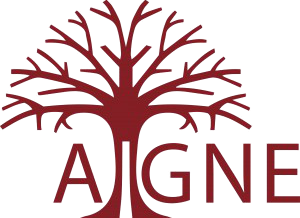Intralingual Translation in Tu rostro mañana, by Javier Marías
DOI:
https://doi.org/10.33178/aigne.vol4.5Abstract
This article explores how Tu rostro mañana by Javier Marías portrays the intricacy of communication. Although an interesting area, it will not focus on the many examples of interlingual translation that take place throughout the text, but instead the less obvious and subtler cases in which the protagonist of the novel, Jacques Deza, provides readers with cases of intralingual translation. In Marías’s novel the source text from which the intralingual translation stems is often presented as an unstable domain in the narrative. As Jakobson observed, the process of intralingual translation, much as its interlingual counterpart, should also be taken as a ‘creative transposition’ as it is directly linked to subjectivity. This suggests that, if both the source text and its translation appear obscure and subjective, the certainty of the message that results from this process is rendered questionable. As the following article seeks to show, this ambiguity is present in the communication process, whether the linguistic exchange takes place between two languages or within the confines of one. Thus, the relentless personal interpretation of messages in the novel brings into question the veracity of the story told by the narrator, turning the narrative plot into a domain where ambiguity and haziness emerge as all-pervasive. Interpretations of lives and linguistic messages fill the many pages of Turostromañana and even though they may be nothing more than Deza’s point of view, this personal and inquisitive narrator encourages readers to mirror his own attitude and, using Tupra’s words, ask themselves ‘qué más, qué más’.Downloads
Published
2018-11-26
Issue
Section
Articles
License
For our full Copyright Notice see our Author Guidelines.
How to Cite
Pérez-Carbonell, M. (2018). Intralingual Translation in Tu rostro mañana, by Javier Marías. Aigne Journal, 4(2). https://doi.org/10.33178/aigne.vol4.5


